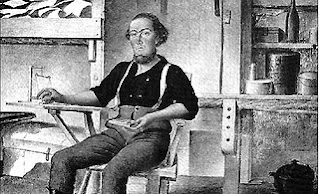Sacred Place: the San Francisco Peaks, Flagstaff, Arizona
Most tribes identified certain landmarks, usually mountains, rivers or lakes, as being the traditional boundaries of their home and hunting ranges. Not only were these reference points, they were often considered sacred. These areas could be the homes of gods or spirits, the birthplace of ancestors, or represent the well-being of the people who lived on that land. A series of beautiful mountain peaks towering over the town of Flagstaff in Arizona are sacred to no less than 13 Native tribes who call Arizona home.
The San Francisco Peaks are the core of an ancient stratovolcano, the kind known to produce the most explosive eruptions. The resulting peaks are the leftovers after the volcano blew itself apart and collapsed. Humphrey's Peak is the highest elevation. The other peaks are, in no particular order, Agassiz, Fremont, Aubineau, Rees and Doyle. In 1629, Franciscan friars missionizing among the Hopi named the mountains in honor of St. Francis of Assisi, 147 years before San Francisco, California, would also be named in honor of the Franciscan founder. Antoine Leroux, a Mountain Man and guide, visited the Peaks in the 1850's and guided several American expeditions to a spring within the caldera of the old volcano, which now keeps Flagstaff in drinking water. In 1877, John Willard Young, son of Brigham Young, established a fort near Leroux Springs. Railroad workers used Fort Moroni as a base while they were building the Atlantic and Pacific Railroad across Arizona. In 1898, President William McKinley designated the San Francisco Mountain Forest Reserve in a move which outraged several local ranching towns, who thought that move would be bad for their economy. In 1908, the Reserve became part of the Coconino Nation Forest. In 2002, Arizona Snowbowl ski resort was built on Humphrey's Peak, a move which angered many Navajo people.
The Navajo consider the San Francisco Peaks and in particular Humphreys Peak, as one of the four sacred mountains that define their traditional homeland. The peaks are the western boundary and considered female. Tradition states that they contain deposits of abalone, that they were secured to the ground with a sunbeam and are associated with the color yellow, particularly the yellow clouds caused by evening twilight. The Hopi people associate the Peaks with the Southwest. The Peaks are aligned with Black Mesa on the Hopi Reservation and used to calculate the winter solstice, signifying the start of a new year. They are home to Kachina spirits. Kachina are associated with heavy snowfall on the peaks. Other tribes who hold the Peaks as sacred include the Apache, Acoma, Southern Paiute, Havasupai, Yavapai, Zuni and Mojave.
The San Francisco Peaks are the core of an ancient stratovolcano, the kind known to produce the most explosive eruptions. The resulting peaks are the leftovers after the volcano blew itself apart and collapsed. Humphrey's Peak is the highest elevation. The other peaks are, in no particular order, Agassiz, Fremont, Aubineau, Rees and Doyle. In 1629, Franciscan friars missionizing among the Hopi named the mountains in honor of St. Francis of Assisi, 147 years before San Francisco, California, would also be named in honor of the Franciscan founder. Antoine Leroux, a Mountain Man and guide, visited the Peaks in the 1850's and guided several American expeditions to a spring within the caldera of the old volcano, which now keeps Flagstaff in drinking water. In 1877, John Willard Young, son of Brigham Young, established a fort near Leroux Springs. Railroad workers used Fort Moroni as a base while they were building the Atlantic and Pacific Railroad across Arizona. In 1898, President William McKinley designated the San Francisco Mountain Forest Reserve in a move which outraged several local ranching towns, who thought that move would be bad for their economy. In 1908, the Reserve became part of the Coconino Nation Forest. In 2002, Arizona Snowbowl ski resort was built on Humphrey's Peak, a move which angered many Navajo people.
The Navajo consider the San Francisco Peaks and in particular Humphreys Peak, as one of the four sacred mountains that define their traditional homeland. The peaks are the western boundary and considered female. Tradition states that they contain deposits of abalone, that they were secured to the ground with a sunbeam and are associated with the color yellow, particularly the yellow clouds caused by evening twilight. The Hopi people associate the Peaks with the Southwest. The Peaks are aligned with Black Mesa on the Hopi Reservation and used to calculate the winter solstice, signifying the start of a new year. They are home to Kachina spirits. Kachina are associated with heavy snowfall on the peaks. Other tribes who hold the Peaks as sacred include the Apache, Acoma, Southern Paiute, Havasupai, Yavapai, Zuni and Mojave.




Comments
Post a Comment